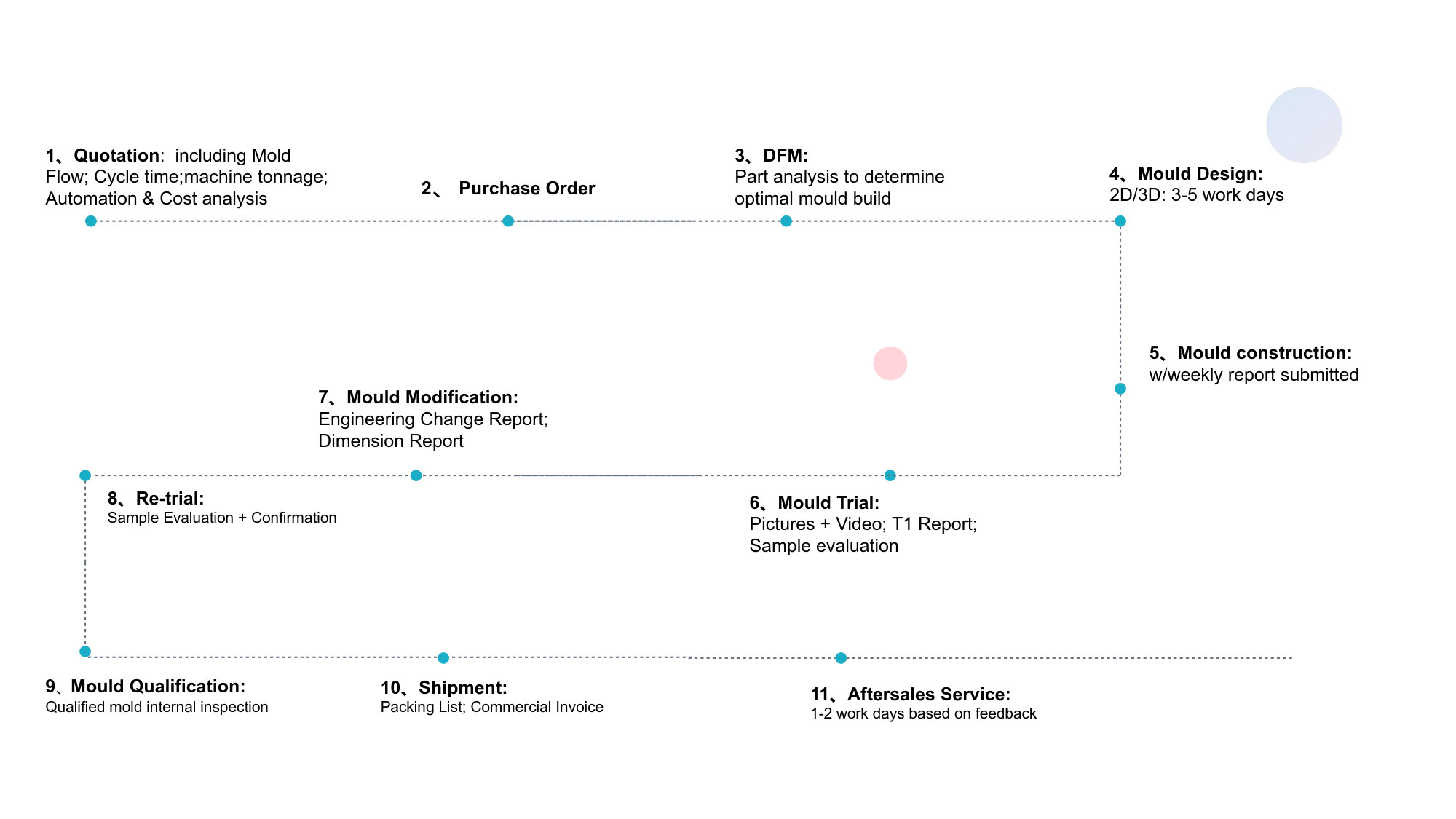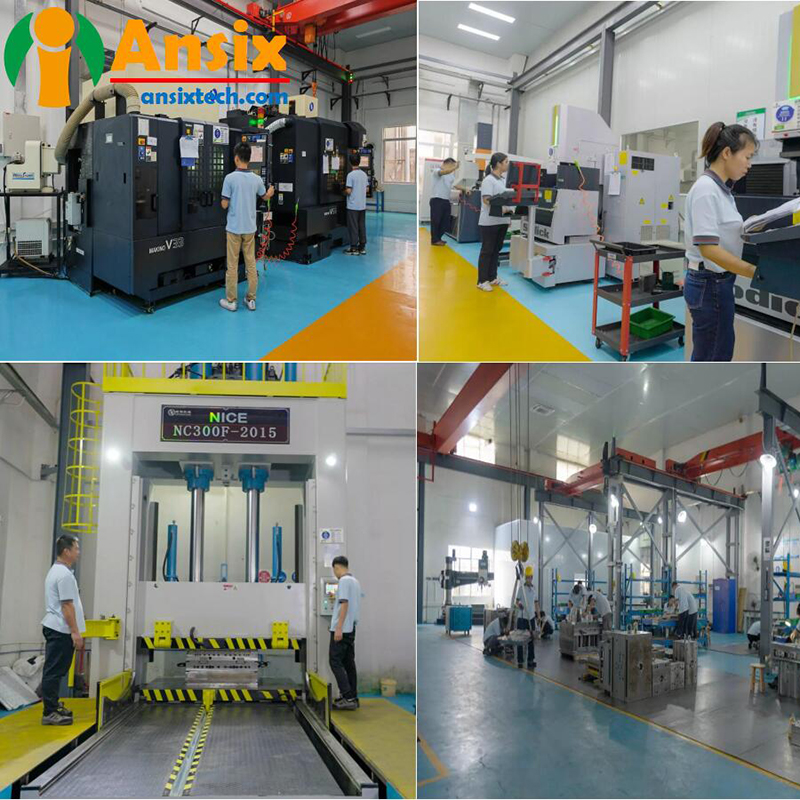Internal Magnetic Trip Lever Precision Injection Molding
FEATURES
-
Mold Description
Product Materials:
PEEK+GF30
Mold Material:
2344
Number of Cavities:
1*4
Glue Feeding Method:
Cold runner
Cooling Method:
Water cooling
Molding Cycle
23s

- Mold flow analysis and mold design for internal magnetic trip leveThe internal magnetic tripping rod is a tripping device used in the mold. It realizes the tripping operation of the mold through magnetic force. When conducting mold flow analysis and mold design for internal magnetic trip levers, the following aspects need to be considered:Position and shape of the rod: The internal magnetic trip rod is usually located on one side of the mold, and its specific position and shape need to be determined so that it can accurately trip the mold.The size and direction of the magnetic force: The internal magnetic tripping rod realizes tripping through magnetic force. The size and direction of the magnetic force need to be determined to ensure that the mold can be effectively released.Rod Material and Dimensions: The internal magnetic trip rod needs to be of sufficient strength and stiffness to withstand the forces and pressures of the trip operation. Therefore, a suitable rod material needs to be selected and its dimensions determined.Mold structure and shape: The internal magnetic trip lever needs to match the mold structure and shape to ensure that the mold can be accurately released. Therefore, the structure and shape of the mold need to be analyzed and designed.When performing mold flow analysis of the internal magnetic trip rod, mold flow analysis software can be used for simulation and calculation to determine the magnitude and direction of the magnetic force, as well as the position and shape of the rod. At the same time, CAD software can also be used for mold design to determine the material and size of the rod, as well as the structure and shape of the mold.In summary, mold flow analysis and mold design for internal magnetic trip rods need to consider the position and shape of the rod, the magnitude and direction of the magnetic force, the material and size of the rod, and the structure and shape of the mold. Through mold flow analysis and mold design, it is ensured that the internal magnetic trip lever can effectively trip the mold.


- Internal Magnetic Trip Lever of mold manufacturing process and product material selectionMold fabrication and injection molding of the internal magnetic trip lever consists of the following steps:Mold design: Design the mold according to the requirements of the product and the shape of the internal magnetic tripping rod. Including mold structure, size, material selection, etc.Mold manufacturing: Mold manufacturing is carried out according to the mold design drawings. Including mold processing, assembly, debugging, etc. Common manufacturing methods include CNC machining, EDM, wire cutting, etc.Mold trial: After the manufacturing is completed, the mold trial is carried out. Use the injection molding machine to test the mold to check whether the structure and size of the mold meet the requirements, as well as the effect of injection molding.Optimization and adjustment: According to the results of the mold trial, optimize and adjust the mold. Including adjusting the structure, size, cooling system, etc. of the mold to improve the injection molding effect and product quality.Injection molding: After the mold adjustment is completed, formal injection molding is carried out. The molten plastic material is injected into the mold, and after cooling and solidification, the formed product is obtained.Throughout the manufacturing and molding process, the following key points need to be noted:Mold material selection: Choose a mold material suitable for injection molding with sufficient hardness and wear resistance to ensure the service life and molding quality of the mold.Mold structure design: Design a reasonable mold structure, including demoulding system, cooling system, nozzle system, etc., to improve injection molding efficiency and product quality.Injection molding parameter control: Control the parameters of the injection molding machine, including temperature, pressure, speed, etc., to ensure the stability and consistency of injection molding.Mold maintenance: Regularly maintain the mold, including cleaning, lubrication, repair, etc., to extend the service life of the mold and ensure molding quality.The mold manufacturing and injection molding of the internal magnetic trip lever requires steps such as mold design, mold manufacturing, mold trial, optimization adjustment, and injection molding. Through reasonable design and control, high-quality injection molded products can be obtained.
- Internal Magnetic Trip Lever Mass production and Quality control
The mass production and quality control of internal magnetic trip rod molds include the following aspects:Standardization of mold manufacturing: In order to achieve mass production, the mold manufacturing process can be standardized. By formulating unified process flow, standardized processing methods and quality control standards, we ensure the consistency and stability of the manufacturing process of each mold.Material selection and procurement: Select appropriate mold materials and establish long-term cooperative relationships with reliable suppliers to ensure the quality and stable supply of materials.Automation and intelligence in mold manufacturing: Introduce automation and intelligent equipment to improve the efficiency and accuracy of mold manufacturing. For example, CNC processing equipment, automatic assembly lines, etc. are used to reduce the impact of human factors on mold quality.Mold trial and debugging: Carry out sufficient mold trial and debugging before mass production. Through the trial mold, check whether the structure and size of the mold meet the requirements, as well as the effect of injection molding. Make necessary adjustments and optimizations based on the mold trial results.Parameter control of injection molding: During the mass production process, the parameters of injection molding, including temperature, pressure, speed, etc., are strictly controlled. By monitoring and adjusting these parameters, quality consistency is ensured for each product.Quality inspection and control: Establish a complete quality inspection system and conduct sampling inspections on each production batch. Through inspection, ensure that the size, appearance, performance, etc. of the product meet the requirements. For substandard products, take corrective measures in a timely manner to prevent defective products from entering the market.Mold maintenance and upkeep: Carry out regular maintenance and upkeep on the mold, including cleaning, lubrication, repair, etc. Through maintenance, the service life of the mold is extended and the stability and quality of production are ensured.The mass production and quality control of internal magnetic trip rod molds require the standardization of mold manufacturing, material selection and procurement, automation and intelligence of mold manufacturing, mold trial and debugging, injection molding parameter control, quality inspection and Control, mold maintenance and upkeep, etc. Through these measures, we can ensure that the quality of the mold is stable and the consistency and quality of the product meet the requirements.





